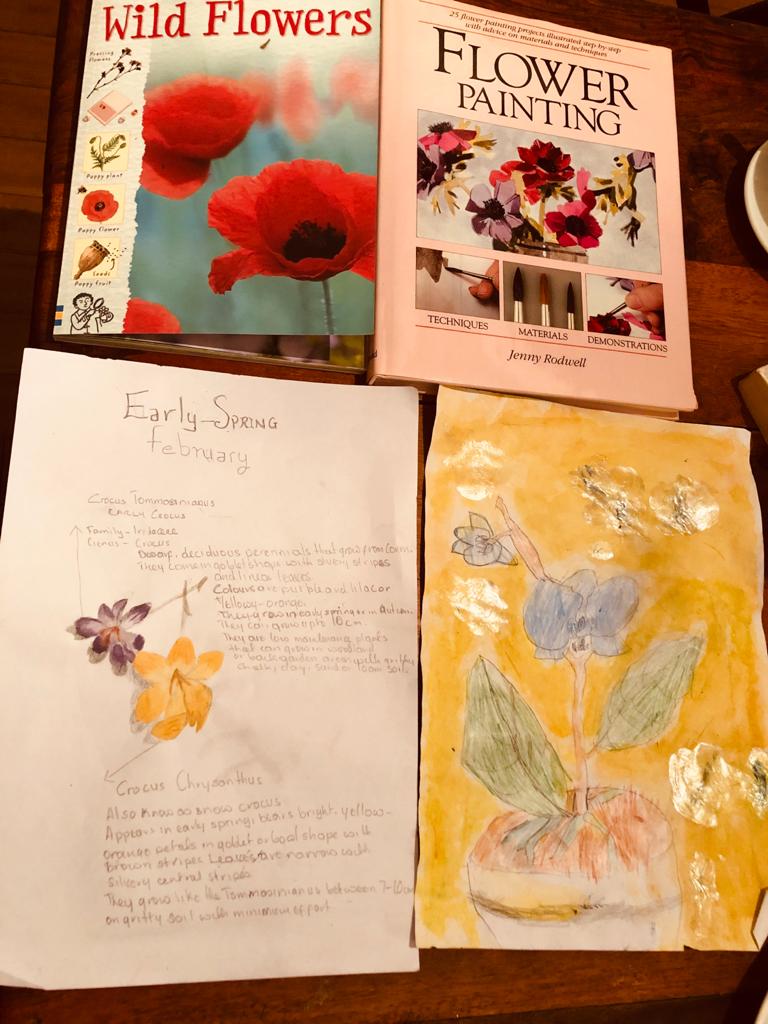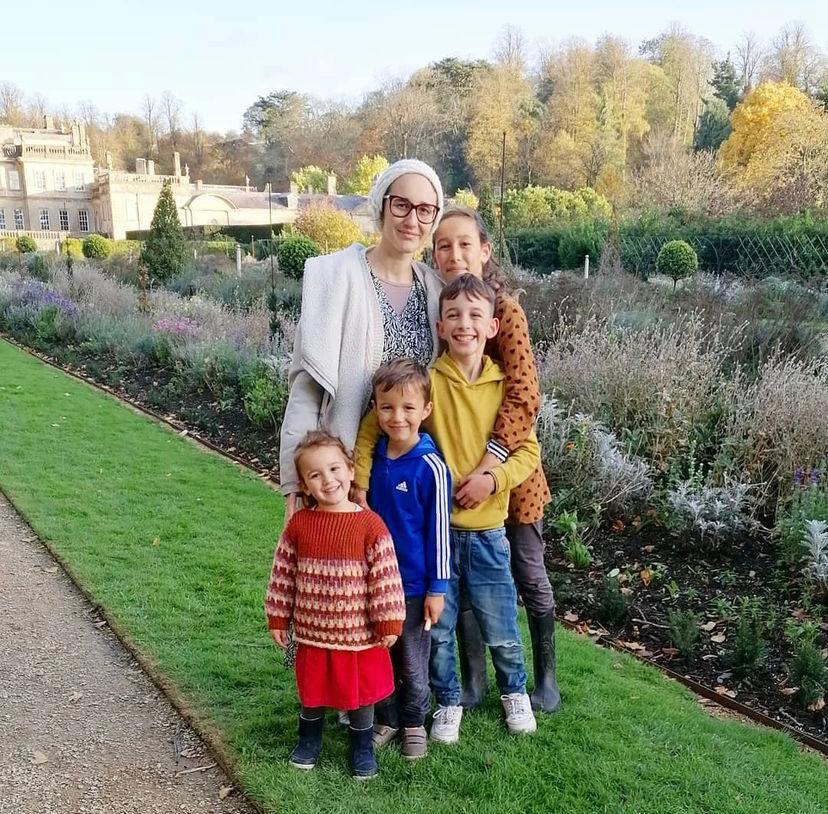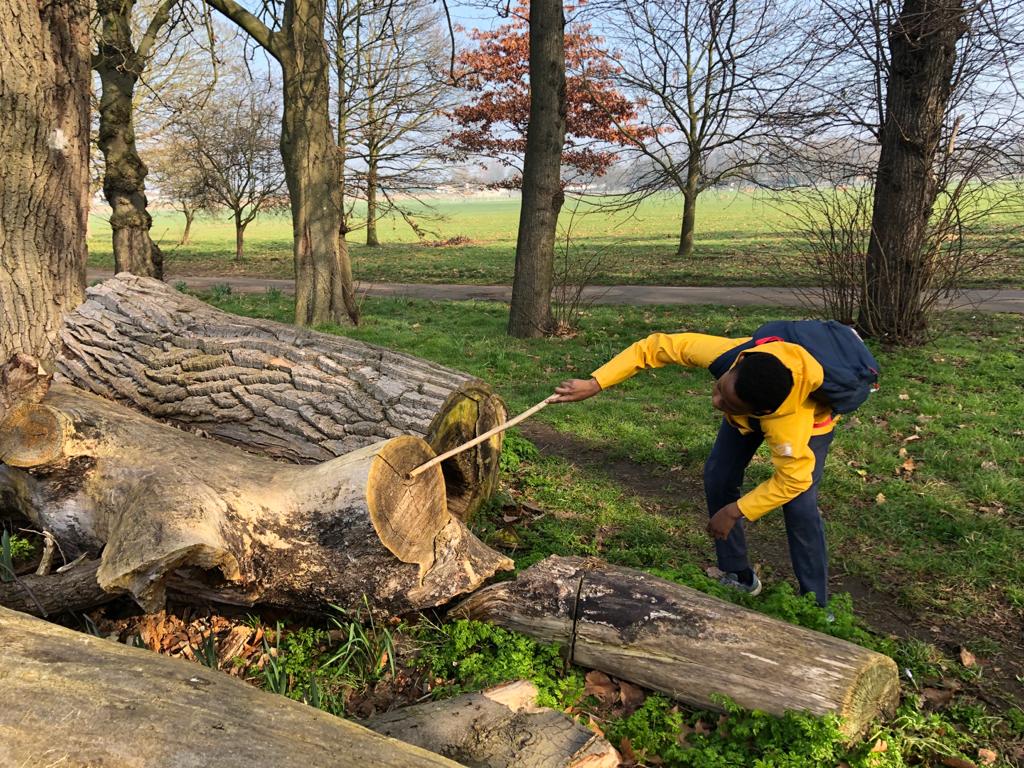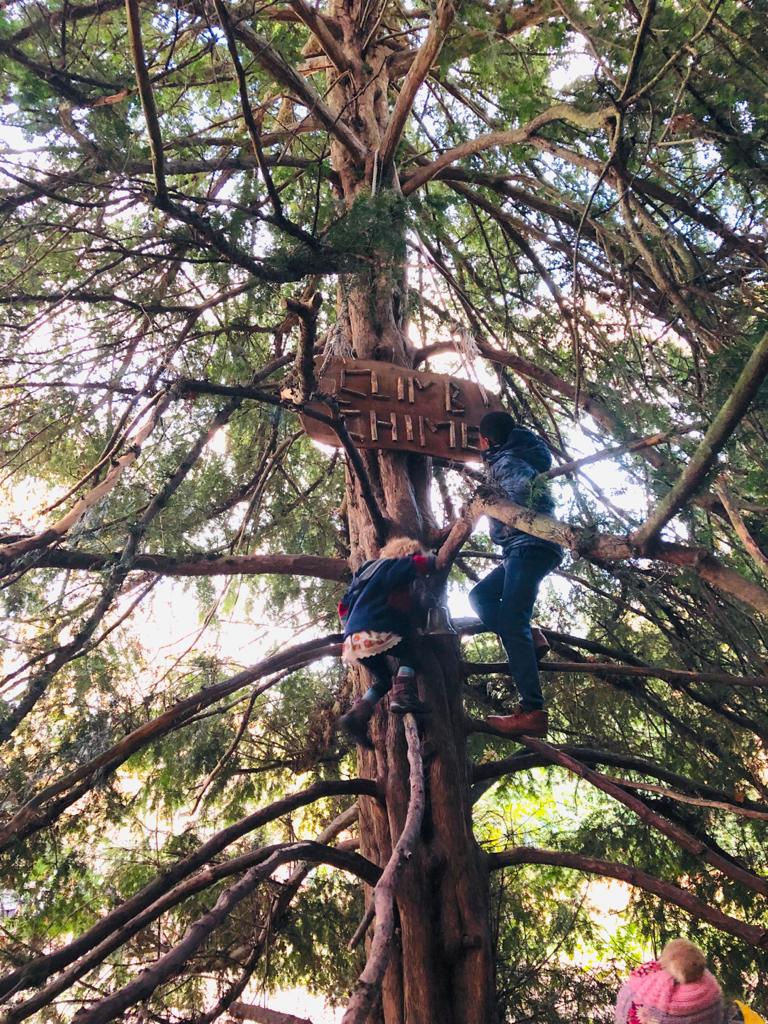Unlike their school-going peers, being out in nature for extended periods is arguably one of the hidden privileges of home educated children. Most Home Ed children spend considerable amounts of time outdoors daily playing freely or meaningfully observing nature, a practice often referred to as nature study or outdoor learning.
According to a research commissioned by the National Trust in 2018, most children in the UK spend an average of 4.2 hours a week outdoors which, is half of the time their parents (i.e. you and I) spent outside as children. What is more alarming is that the report states on average, children aged 10 to 16 now spend only 12.6 minutes a day on physical outdoor activity compared with 10.4 waking hours being relatively motionless. And this was before lockdown!! I dread to imagine what those figures must be like now after a year of children being cooped up at home in front of screens all day.
These stats amongst other reasons is why nature study, the practice of encouraging children to pay close attention to and form a lifelong habit of appreciating and loving their natural environment is so important in my home school. Nature study as opposed to natural science is closely associated with the philosophy of Charlotte Mason.
Children, especially young children, Charlotte Mason advocated, should be given the opportunity to spend long periods outdoors to become well acquainted with their immediate natural surroundings well before formal learning. Through outdoor learning, children can develop their mental habit of attention through observation, object investigation as well as strengthen their physical and language development through climbing, singing, picture narration and many others valuable lessons. Nature offers children the opportunity to develop a sense of beauty, order and structure, upon which they are able to wonder and ultimately learn to care for and delight in our created world.
“There is no sort of education to be got in the early years so valuable to children as that which they get for themselves of the world they live in. Let them once get in touch with nature, and a habit is formed which will be a source of delight through life. We were all meant to be naturalists, each in his degree and that it is inexcusable to live in a world so full of the marvels of plant and animal life and to care for none of these things.” CM Vol 1,Home Education
Charlotte Mason went as far as to encourage parents to take their children out for 2 to 4 hours a day regardless of the weather. She strongly advocated for taking children out on regular nature walks where parents are to act as passive guides gently pointing children to schemas in nature without explicitly telling them what to look at or look for. Through these walks, children begin to observe, closely inspect and collect nature finds which they can bring home to draw and record in their natural journals.
In my home, nature study has been the gift that keeps on giving. Prior to encountering Ms Mason, my relationship with nature was rather shallow. I‘ve always loved the aesthetics of nature. The majestic landscapes, the beautiful compositions of colours and shapes and the sense of freedom and inspiration that being outdoors brought me. This is why spring is hands down, my favourite time of the year.
Ms Mason’s views on nature gave me new lenses with which to observe and interpret the world around me. Not only did it revive my spirit, but it gave me yet another nutritious meal recipe to offer my family. As for my son, becoming acquainted with nature study was like finding the lyrics to a tune he had long been singing. Being an observant child, he has always been good at spotting the shapes of trees and clouds as well as the sighting of bugs, worms and flowers in the garden. Having learnt to slow down and listen, I learn so much from viewing nature through his eyes.
Learning about nature study has given me the language, tools and reason to fully appreciate and interpret nature with my son, not only as a science or health necessity but as an act of worship of the divine creator.
This week on the podcast, I have the pleasure of speaking with Weronika Ozpolat (Ronni) a home ed mum to 4 young children, a part time speech pathologist and an avid blogger, content and resource creator at http://www.multiculturalmotherhood.com.
Being one of those exceptional Home Ed mamas who are gifted with the ability to juggle many things at once: Ronni is adept at combining work with home-edding with writing, speaking, training, making amazing IG reels, baking, knitting, creating community and more. However, she says, being out in nature with her kids regularly is by far her top priority and one of her favourite things to do.
This is why I am was thrilled to have the pleasure of speaking to Ronni about her family’s nature schooling rituals and practices on the podcast this week. You can listen to our conversation here now.


12 Charlotte Mason-inspired Tips to Get you Nature or Outdoor Schooling like a Pro.
These nature study tips were drawn from my conversation Weronika Ozpolat (@multiculturalmotherhood and ultimately inspired by the nature study queen herself, Charlotte Mason.
- Get out regularly – be consistent go out in all manner of weather. Go for nature walks, got to lonely places where children can explore freely, look out for nature reserves etc.
- Become a nature mentor – point out what you love and notice about nature to your children. Ask questions, don’t feed them with answers, allow them the space to think for themselves.
- Have a small nature/botany reference resource to hand – this could be a book or a phone which to investigate the names of flora and fauna in your local environment. Failing that take photos and encourage your children to investigate their finds when they get home.
- ‘Sit Spot’ – (as Ronni calls it) find a quiet spot in your local area to visit regularly where you could sit with your children and experience nature with all your senses. This could include observing a one tree throughout the year, listening to bird songs, listening to different nature sounds, smelling leaves, soil and blooming flowers, noticing the shapes and colours, feeling the different textures. So in other words, get out there, find a spot, take a sit, breathe in and breathe out – find something memorable to take home and get creative.
- Narrate a nature scene – ask your children to narrate/describe what do they notice in nature. Encourage them to use descriptive language when they explain colours, shapes, smells etc. Ask them why questions. You can turn this into a game as each of you takes a turn to describe the same scene.
- Take your children to a quiet, open or hidden green space – a place where they can just be themselves; to play, sing, shout to their heart’s content without risk of affecting anyone or just be creative. This could be a place where they can feel at one with nature and be free to just be kids with no agenda.
- Keep a nature journal – encourage your children to draw or make a visual representation of what they observe in nature. Use collectible objects, take photos and use books as reference- allow kids to experiment- encourage them to add written details as they get older.
- Use nature poems – make use of the wide range of nature poems out there to reinforce your children’s interest in your relevant nature topic. Nature poems are also a good source of copy work which can be added to a nature journal. Some examples of good sources of nature poems include: A Liturgy of Love Morning Time Resource; Explore nature with children Examples of nature poem books include: I’m the seed that grew the tree, Come Follow Me, A Poem for Every Day of the Year.
- Keep a collection of nature finds – encourage your children to keep their own unique collection of nature finds, including dead bugs and insects, leaves, feathers, sticks etc; all of which can be closely observed through a microscope and details entered in a journal.
- Keep nature themed table/shelf– if you have the space, try to keep a thematic visual nature table. This includes putting together a visually appealing display of relevant nature themed books, posters, nature collectibles, miniature toys or sensory objects. You can find a few good examples on
- Study different nature subjects – use the seasons to explore different aspects of nature, for example spring is a good time to look for blooming flowers, bugs and pond life. Other topics like astronomy, animals, trees, clouds, leaves, snow etc could be studied at different times of the year.
- Meet up with others – find a local group of like-minded nature loving families to meet and enjoy nature with. Children are often inspired by each other and you get to make friends and exchange nature study notes with other parents.






Thanks for sharing. I read many of your blog posts, cool, your blog is very good.